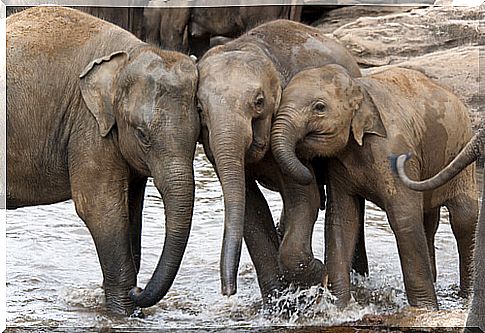Cancer And Wild Animals

Cancer is a disease that just by being named generates the chills. Unfortunately, the prevalence of this pathology is increasing, and it is estimated that 25% of people globally have suffered it at some point in their lives.
As unpleasant as the subject may be, there are some truly curious facts about this disease in many wild animals, and researching them could help us find effective treatments. Here we show you some examples of the dynamics of cancer in the animal world.
The great enemy of the human being
Cancer is based on an uncontrolled division of cells in an organ of the body that generates tumors. All living beings have cells, therefore, it is impossible to rule out the presence of cancer, at least in all vertebrates.
An interesting fact is that this pathology should not be considered as a single-cause disease, but rather as the final result of the union of multiple risk factors. Approximately 90% of cases are due to environmental factors, and only the remaining 10% are due to genetic issues.
Here are some surprising facts about cancer in the animal world.

Elephants have almost no cancer
This is an idea at least difficult to understand. Elephants are huge, and they have 100 times more cells in their body than we do. The higher the cell count, the greater the probability of developing cancerous tumors, right?
The answer is no: only 5% of elephants have cancer in their lifetime. According to a study summarized in the BBC, this could be because these animals have evolutionarily developed defenses to prevent the formation of tumors.
The genetic code may be the answer
Cancer is the result of a genetic mutation at the cellular level, which, as we have already said, generates uncontrolled growth of them. There are certain genes that set off alarms: they kill these damaged cells and prevent the mutation from developing.
This is the case of the TP53 gene, which transcribes a tumor suppressor protein. Humans have one of these genes, while elephants have 20 different ones. This shows us that these animals have a much more efficient system when it comes to detecting and eliminating tumor-inducing mutations.

The mole rat: the only vertebrate immune to cancer
Mole rats are eusocial rodents whose most obvious characteristic is their lack of hair. In addition to many other attributes that make this animal unique, you will be surprised to learn that it is immune to cancer.
Various studies have tried to induce this pathology in different species of blind mole rats, and it has not been successful in almost any of them. The answer could be found in a curious mechanism at the cellular level:
- Cells of the mole rat are literally capable of killing tumors, killing potentially tumorous cells through secretion of substances.
- This fact is extremely curious, since the TP53 gene is partially deactivated in them, which would lead to believe that these species must be much more susceptible to cancer than other mammals.
- This is not the case because the mole rat has generated its own anticancer mechanism. They have a double copy of a gene called ifbn1, which greatly strengthens their immune system and seems to provide extraordinary resistance against carcinogenic processes.
Final notes
In the previously cited studies, a scientist underscores an important claim:
This highlights a reality that is difficult to deny: our daily habits are largely responsible for the spread of this dramatic disease. Studies such as those carried out with mole rats could provide essential information about the treatment of this pathology in the future, but it is clear that a healthy lifestyle is the best prevention.







